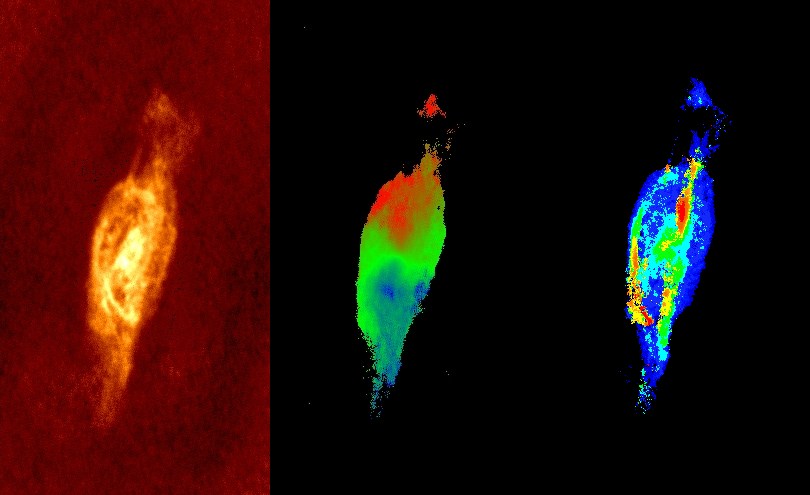Images of the hydrogen gas in the galaxy NGC3621

These three images represent robust-weighted moment maps (column density, intensity weighted mean velocity and velocity dispersion) of HI in NGC3621, an attractive southern field spiral galaxy.
The HI column density image on the left shows the very extended gaseous disk surrounding NGC3621. The disk is approximately elliptical, with the major axis aligned with both the optical and kinematic major axes. At the adopted distance of 6.7 Mpc, this corresponds to a radial extent of about 50 kpc, making NGC3621's HI disk one of the most extensive ever measured. The image shows evidence for gas swept up in spiral arms, particularly to the south and east. The almost rectangular structure seen along the major axis appears distinct from the more elliptical disklike component.
The middle image shows the velocity field determined from the first moment HI image. The north side has the higher velocities. The velocity field exhibits the broad characteristics of an inclined, circular disk in differential circular rotation, but in addition to this overall pattern there are small scale ``wiggles'' in the isovelocity contours, indicating departures from pure circular rotation, possibly due to the effects of the spiral arms rotating in a warped disk.
The rightmost image is the velocity dispersion, showing increased turbulence
within the spiral arm fragments and also along a linear structure that is
nearly parallel to the major axis. Work is underway to determine whether this
structure is a distinct dynamic component (for example the gas from a
companion galaxy orbiting or consumed by NGC3621) or whether it is a
peculiarity of NGC3621's own disk and arms.
20cm image of NGC3621 by W. Walsh
Original: Bob Sault (14-Mar-2004)
Modified: Bob Sault (2-Apr-2004)
